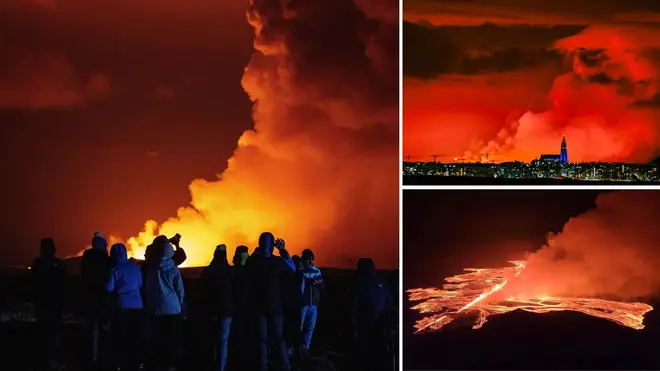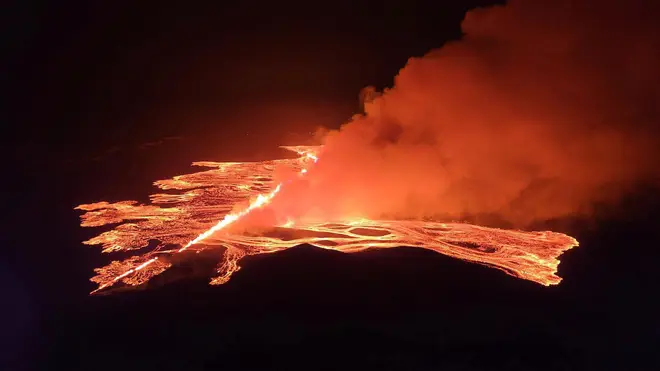
Nick Ferrari 7am - 10am
17 March 2024, 07:48 | Updated: 17 March 2024, 08:38

A state of emergency has been declared in southern Iceland after a volcano has erupted for the fourth time in three months.
It is believed to be the most powerful one so far with lava travelling as far as the evacuated town of Grindavik.
Iceland's Meteorological Office said the eruption opened a fissure about two miles long between Stora-Skogfell and Hagafell mountains on the Reykjanes Peninsula
It comes after authorities had warned another eruption was imminent.
Hundreds of people were evacuated from Blue Lagoon, a thermal spa that is one of Iceland's most popular tourist attractions, when the eruption began.
Meanwhile, residents of the fishing town Grindavik had to be evacuated after some of the 4,000 initially evacuated had returned following the previous outbreaks.
It comes after Grindavik was evacuated in November when the Svartsengi volcanic system awakened after almost 800 years with a series of earthquakes that opened large cracks in the ground north of the town.
The volcano eventually erupted on December 18, sending lava flowing away from Grindavik.
Read more: Travel mayhem ensues after closures and crash on M25 and five-mile tailback on diversion route

A second occurred on January 14 followed by a third on February 8.
Residents were permitted to return to their homes on February 19.
The latest eruption began around 8pm local time on Saturday, according to the country’s civil defence service.
There have been no disruptions to flights at Keflavik, Iceland's main airport.
Footage captured of the latest eruption shows billowing smoke and magma spilling from vents in the earth.
Geophysicist Magnus Tumi Gudmundsson, who flew over the impacted areas in a helicopter, said the latest eruption is the most powerful so far.
He also warned that if the volcanic activity does not ease, it is possible lava could spill into the sea, he told local media outlet RUV.

Einar Bessi Gestsson, a natural disaster expert at the Norwegian Meteorological Agency, said such contact between the lava and sea could result in dangerous gases and small explosions.
The Icelandic Met Office warned that this lava bed was “significantly wider” than the one that followed the February eruption.
Iceland, which sits above a volcanic hot spot in the North Atlantic, sees regular eruptions and is highly experienced at dealing with them.
No confirmed deaths have been reported from any of the recent eruptions but a workman was declared missing after falling into a fissure opened by the volcano.